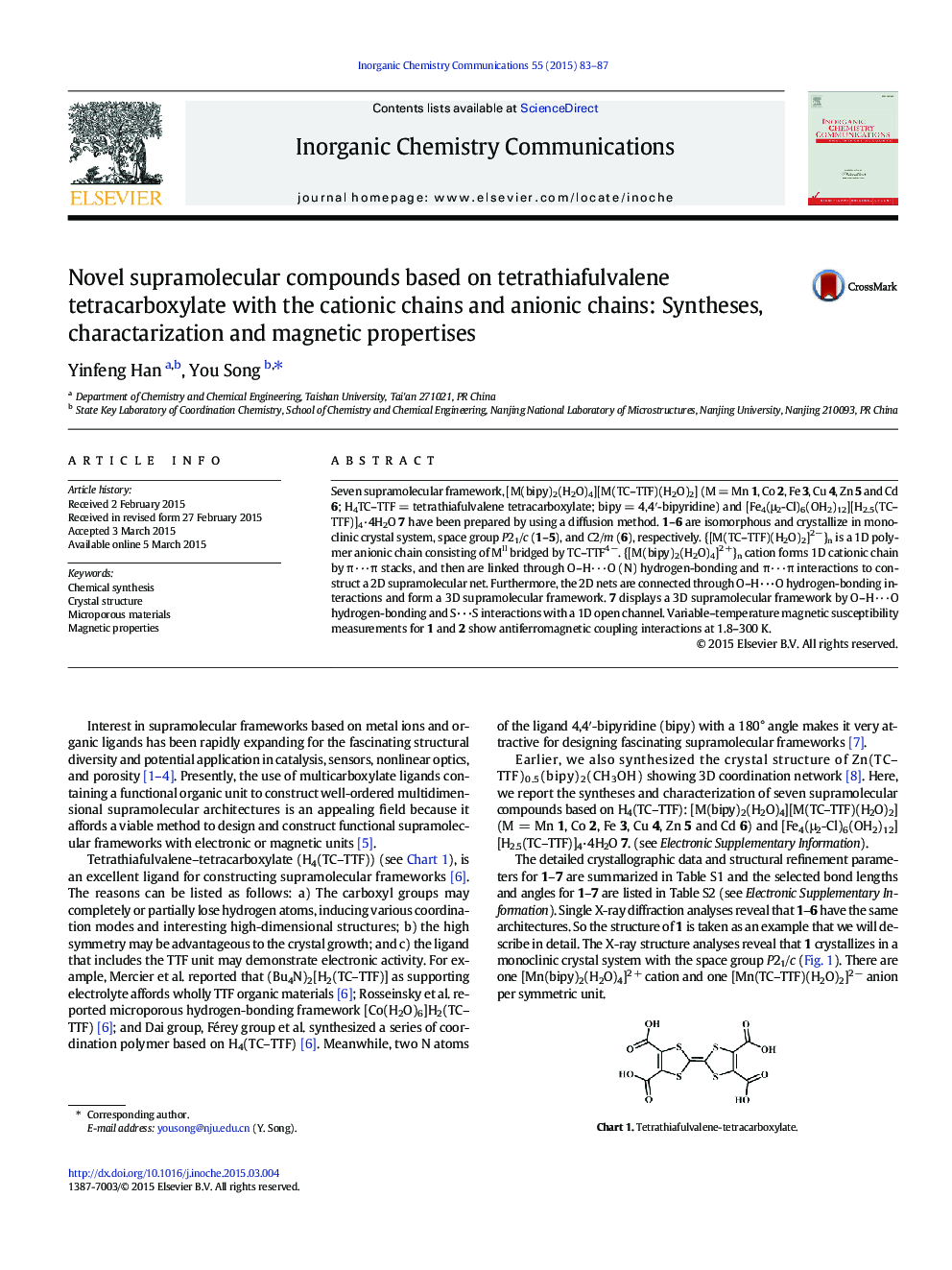| Article ID | Journal | Published Year | Pages | File Type |
|---|---|---|---|---|
| 1305445 | Inorganic Chemistry Communications | 2015 | 5 Pages |
•Seven novel supramolecular compounds based on tetrathiafulvalene tetracarboxylate.•The compounds formed 3D supermolecular frameworks with 1D cationic chains and 1D anionic chains.•1 and 2 shows antiferromagnetic coupling interactions.
Seven supramolecular framework, [M(bipy)2(H2O)4][M(TC–TTF)(H2O)2] (M = Mn 1, Co 2, Fe 3, Cu 4, Zn 5 and Cd 6; H4TC–TTF = tetrathiafulvalene tetracarboxylate; bipy = 4,4′-bipyridine) and [Fe4(μ2-Cl)6(OH2)12][H2.5(TC–TTF)]4·4H2O 7 have been prepared by using a diffusion method. 1–6 are isomorphous and crystallize in monoclinic crystal system, space group P21/c (1–5), and C2/m (6), respectively. {[M(TC–TTF)(H2O)2]2 −}n is a 1D polymer anionic chain consisting of MII bridged by TC–TTF4 −. {[M(bipy)2(H2O)4]2 +}n cation forms 1D cationic chain by π···π stacks, and then are linked through O–H···O (N) hydrogen-bonding and π···π interactions to construct a 2D supramolecular net. Furthermore, the 2D nets are connected through O–H···O hydrogen-bonding interactions and form a 3D supramolecular framework. 7 displays a 3D supramolecular framework by O–H···O hydrogen-bonding and S···S interactions with a 1D open channel. Variable–temperature magnetic susceptibility measurements for 1 and 2 show antiferromagnetic coupling interactions at 1.8–300 K.
Graphical abstractFigure optionsDownload full-size imageDownload as PowerPoint slide
